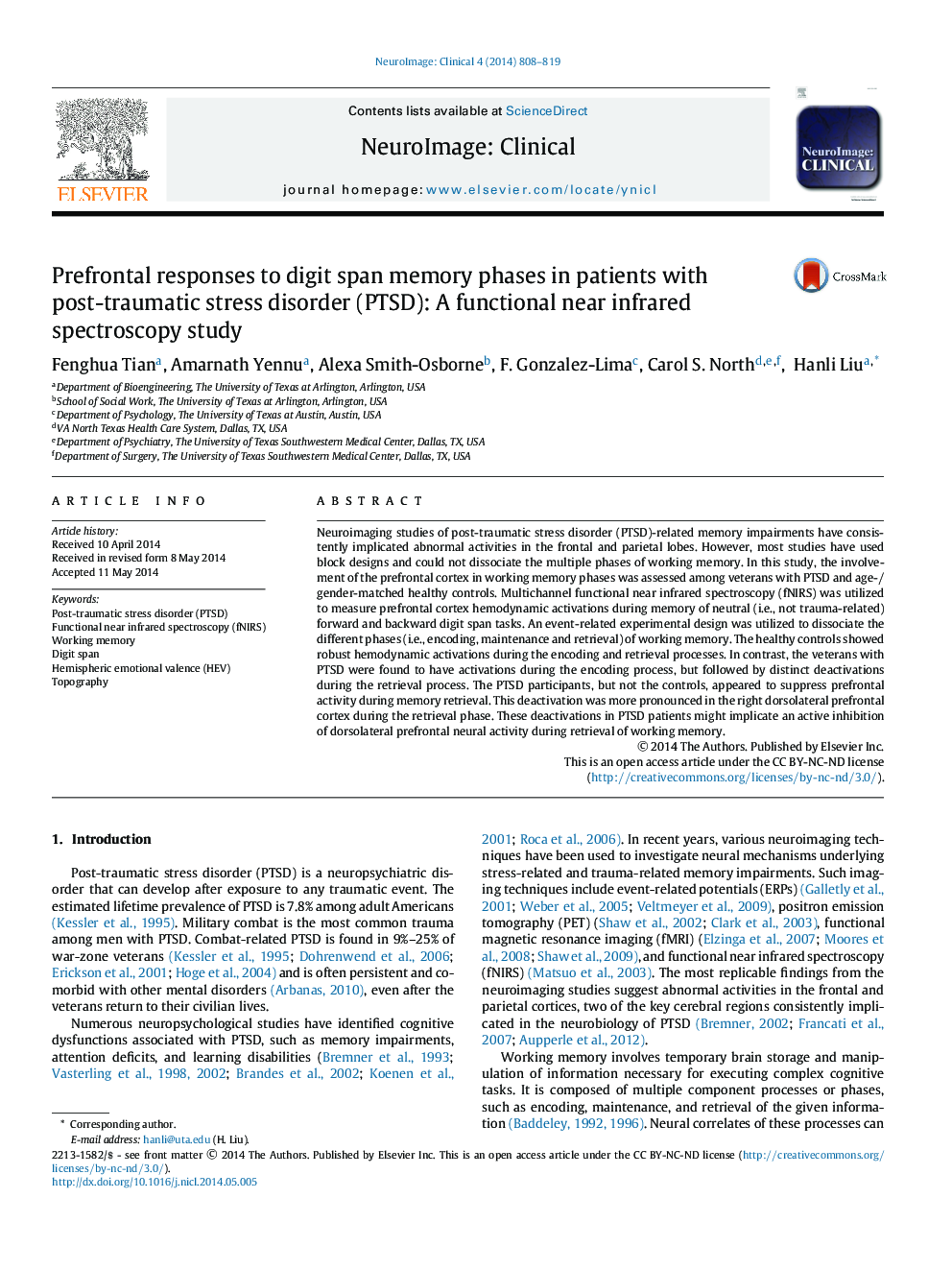| Article ID | Journal | Published Year | Pages | File Type |
|---|---|---|---|---|
| 3075363 | NeuroImage: Clinical | 2014 | 12 Pages |
•Multiple phases of working memory in PTSD and healthy controls were assessed.•Brain atlas-based optical topography and multi-regression analysis were implemented.•Prefrontal deactivation in the retrieval phase of working memory was found in PTSD.
Neuroimaging studies of post-traumatic stress disorder (PTSD)-related memory impairments have consistently implicated abnormal activities in the frontal and parietal lobes. However, most studies have used block designs and could not dissociate the multiple phases of working memory. In this study, the involvement of the prefrontal cortex in working memory phases was assessed among veterans with PTSD and age-/gender-matched healthy controls. Multichannel functional near infrared spectroscopy (fNIRS) was utilized to measure prefrontal cortex hemodynamic activations during memory of neutral (i.e., not trauma-related) forward and backward digit span tasks. An event-related experimental design was utilized to dissociate the different phases (i.e., encoding, maintenance and retrieval) of working memory. The healthy controls showed robust hemodynamic activations during the encoding and retrieval processes. In contrast, the veterans with PTSD were found to have activations during the encoding process, but followed by distinct deactivations during the retrieval process. The PTSD participants, but not the controls, appeared to suppress prefrontal activity during memory retrieval. This deactivation was more pronounced in the right dorsolateral prefrontal cortex during the retrieval phase. These deactivations in PTSD patients might implicate an active inhibition of dorsolateral prefrontal neural activity during retrieval of working memory.
